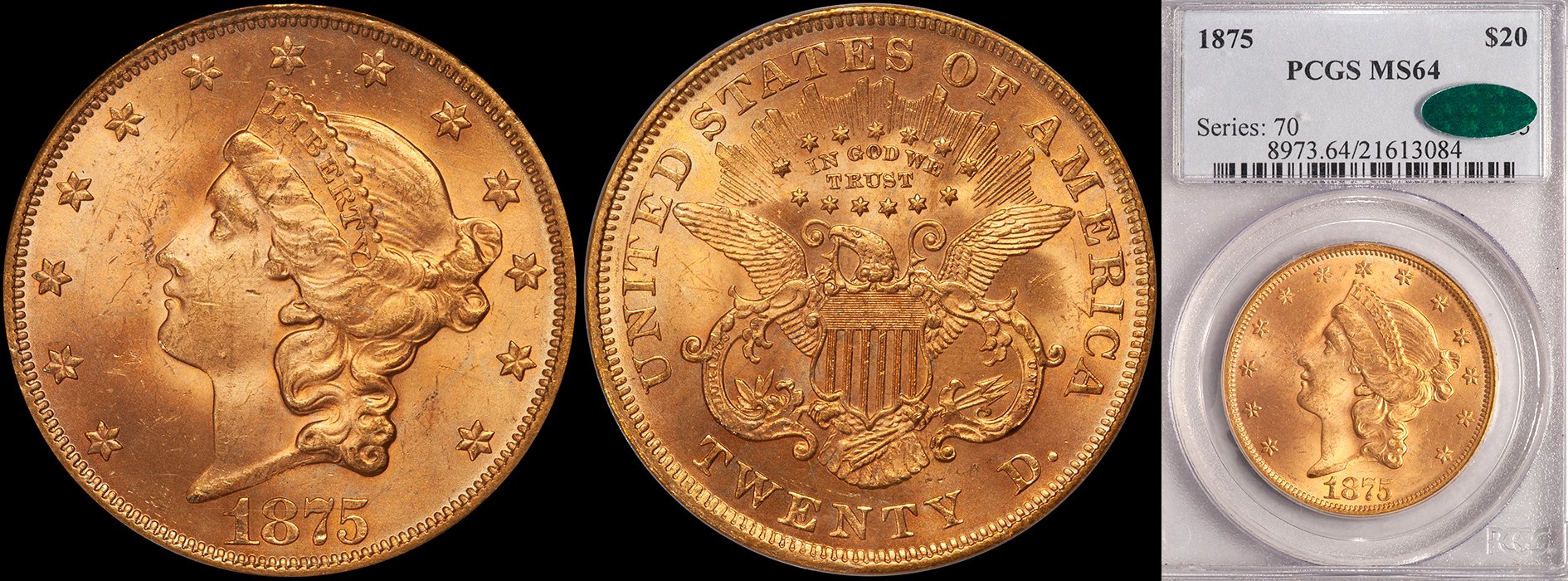Fab Five St. Gaudens Double Eagles
/For many people, the name the Fab Five refers to the starting players for the famous University of Michigan basketball team in the early 1990’s who played for the national championship in 1992 and again in 1993. But for the collector of United States gold coinage, this term refers endearingly to the five St. Gaudens double eagles produced between 1929 and 1932. The Fab Five are, more specifically, the 1929, 1930, 1930-S, 1931-D and 1932 double eagles. All of these are far rarer than their mintage figures would suggest. Recent research has shown that most of the late date Saints were never released for circulation and that a great majority were subsequently melted.
So what’s the story behind the Fab Five and why have they become so popular with collectors?
Other than the catchy marketing name, these coins have a lot going for them. As I mentioned above, all five are quite rare. But unlike a number of the other rare issues in the popular St. Gaudens series (such as the 1920-S, 1921, 1924-S, 1925-S and the 1926-D) the Fab Five tend to come very nice when offered for sale. In fact, you will rarely see an example of the Fab Five in grades below MS63. All of these dates tend to come with very good luster, sharp strikes and rich multi-hued coloration. They are popular because they are truly rare coins that come with really good eye appeal. And they are in demand because they are the last dates in this series you can (legally) own…for now.
The rarity levels of the Fab Five have often been misunderstood. In my opinion, the correct order of availability from rarest to most common is as follows: 1930-S, 1931-D, 1929, 1932 and 1931.
The 1930-S is easily the rarest of these, both in terms of overall and high grade levels. There are probably no more than three or four dozen known with most in the MS62 to MS64 range. There were two MS66 examples in the Morse collection which sold for $253,000 and $207,000, respectively, in 2005. I am aware of two or possibly three other examples that grade MS66.
Because of its status as the only Denver coin in the Fab Five, the 1931-D is very popular. The population figures at both PCGS and NGC are greatly inflated by resubmissions and this date is actually very rare in any grade. There are two known in MS66: an example in the Duckor collection and the Morse 11/05: 6713, Thain Price coin that is now in the Kutasi collection.
The 1929 is a greatly misunderstood date. Its population figures in MS63 and MS64 are tremendously inflated by resubmissions. In Gem, this is among the rarest of the Fab Five and there are only three in MS66 including a piece in the Duckor collection.
The 1932 is a curious issue. A greater percentage of the surviving coins are known in high grades (i.e. MS63 to MS65) than for the other Fab Five issues. When available, this issue tends to have excellent color and shows fewer deep marks than the other dates of this era but the luster, which has a semi-matte texture, is not as flashy as on the other Philadelphia pieces. There are six pieces graded MS66 by PCGS and this includes an example from the Morse collection that sold for $138,000 in November 2005.
The most obtainable Fab Five issue is the 1931 of which perhaps as many as 125-150 pieces are currently known. This is another date that, like the 1932, tends to come with excellent eye appeal when it is offered for sale. Most pieces I have seen grade MS64 to MS65 but MS66 examples are very rare with just eight graded by PCGS. There is also a single example known in MS67 which sold for $264,500 in the Heritage November 2005 Morse collection auction.
As the popularity of the St. Gaudens series has increased over the past few years, prices for these five dates have risen dramatically. In most cases, they have doubled in the past three to five years but this is understandable when one considers the high level of demand and the small supply. I expect the Fab Five to remain some of the most popular 20th century United States gold issues in the coming years.









